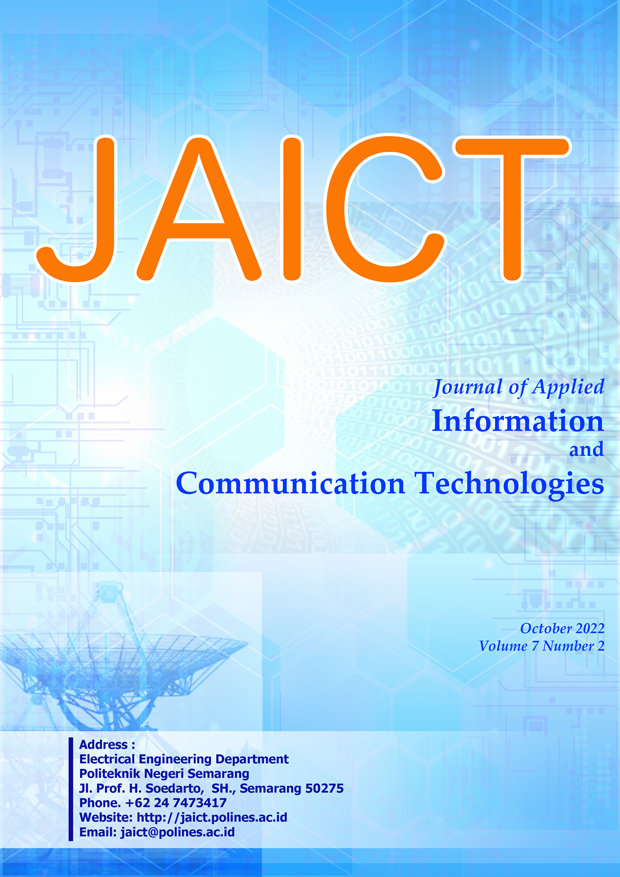Rear Dump Truck Measurement Design Using Laser For Loading Process Automation
DOI:
https://doi.org/10.32497/jaict.v7i2.3648Keywords:
Measurement, Laser, Loading ProcessAbstract
Transportation of goods using trucks is an irreplaceable method. However, it is undeniable that the truck-based method of transporting goods often attracts controversies, such as over-loading and products containing hazardous chemicals. This makes the need for automation of loading goods to trucks so that intentional or unintentional errors such as overloading and damage caused when an accident occurs in the process of loading chemical goods can be minimized. Of the four stages proposed in the automation process, namely (1) Trucks enter the cargo loading area, (2) Measurement of the volume or capacity of the vessel, (3) Calculation of the ideal arrangement of products on the vessel, and (4) The process of loading goods using a robotic devices. This article contains the design process for measuring the volume or capacity of the vessel. The measurement process is carried out using a plus (+) laser module and the steps taken in the measurement process are scanning the vessel that is highlighted using the laser module at several angles using a camera and calculating the length, width, and height of the body using trigonometric formulas. With the automation of loading goods, it is hoped that human intervention in the loading and unloading process can be eliminated so that errors that may occur can be minimized.Downloads
Published
Issue
Section
License
Authors who publish with this journal agree to the following terms:Authors retain copyright and grant the journal right of first publication with the work simultaneously licensed under a Creative Commons Attribution License that allows others to share the work with an acknowledgement of the work's authorship and initial publication in this journal.
Authors are able to enter into separate, additional contractual arrangements for the non-exclusive distribution of the journal's published version of the work (e.g., post it to an institutional repository or publish it in a book), with an acknowledgement of its initial publication in this journal.
Authors are permitted and encouraged to post their work online (e.g., in institutional repositories or on their website) prior to and during the submission process, as it can lead to productive exchanges, as well as earlier and greater citation of published work (See The Effect of Open Access).






